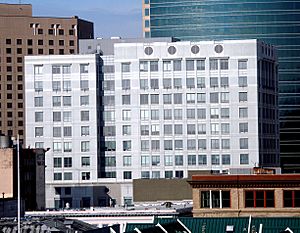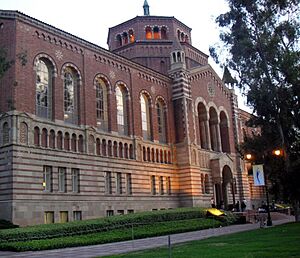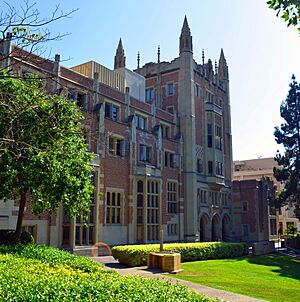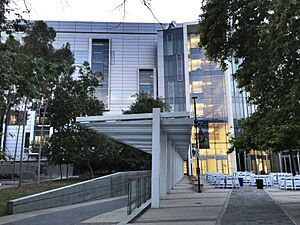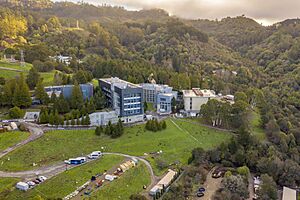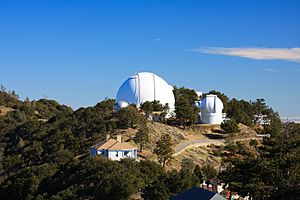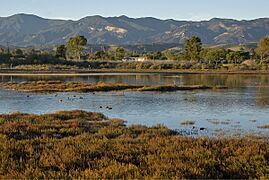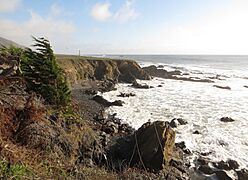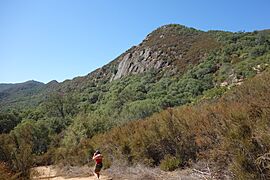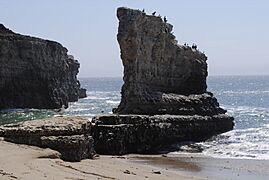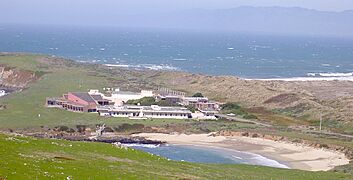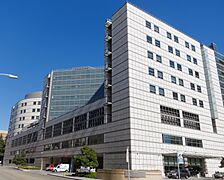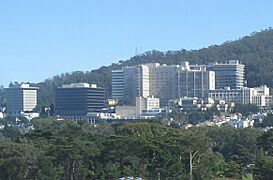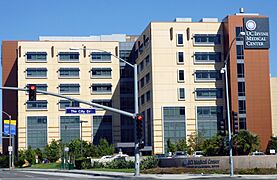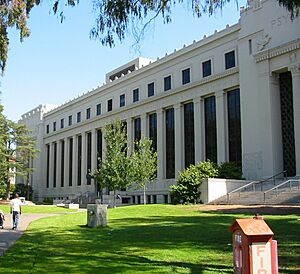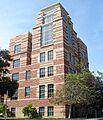University of California facts for kids
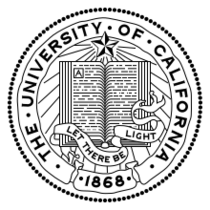 |
|
| Motto | Fiat lux (Latin) |
|---|---|
|
Motto in English
|
Let there be light |
| Type | Public research university system |
| Established | March 23, 1868 |
| Endowment | $29.5 billion (2024) |
| Budget | $53.6 billion (2024–2025) |
| President | James Milliken |
|
Academic staff
|
26,100 (February 2025) |
|
Administrative staff
|
192,400 (February 2025) |
| Students | 299,407 (February 2025) |
| Undergraduates | 236,070 (February 2025) |
| Postgraduates | 63,337 (February 2025) |
| Location |
Oakland (Office of the President)
,
California
,
United States
37°48′8″N 122°16′17″W / 37.80222°N 122.27139°W |
| Campus | 10 campuses under direct control (9 with undergraduate and graduate schools, one professional/graduate only), one affiliated law school, and one national laboratory |
| Colors | Blue and gold |
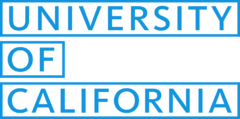 |
|
The University of California (UC) is a large group of public universities in California. It's like a big family of schools, with its main office in Oakland. The UC system has ten main campuses across the state. These include well-known places like Berkeley, Los Angeles, and San Diego.
UC is known for its excellent teaching and research. Many of its campuses are called "Public Ivies" because they offer a high-quality education similar to the famous Ivy League schools. UC professors and researchers have won many Nobel Prizes for their important discoveries.
The UC system has nearly 300,000 students and over 26,000 teachers. It also has a huge number of former students, more than 2.5 million! The newest campus, UC Merced, opened in 2005. Most UC campuses teach both undergraduate (first college degrees) and graduate students (those studying for advanced degrees). However, UC San Francisco focuses only on medical and health sciences for graduate students.
UC also helps manage three important national laboratories for the U.S. Department of Energy. These labs do a lot of scientific research. The University of California was started on March 23, 1868. It first operated in Oakland before moving to Berkeley in 1873. Over time, more campuses were added and given more independence.
Contents
How the University of California Started
Early Beginnings

In 1849, California decided to create a full education system, including a state university. In 1866, a college for agriculture, mining, and mechanical arts was planned to get money from the government.
Around the same time, a private school called Contra Costa Academy was started in Oakland in 1853. This school later became the College of California. The people running this college wanted to teach subjects like history and literature. They bought land in what is now Berkeley for a future campus.
In 1867, the College of California agreed to join with the state's planned college. They wanted to create a complete university, not just a technical school. So, on March 23, 1868, the law creating the University of California was signed. This new university took over some goals and properties from both older colleges.
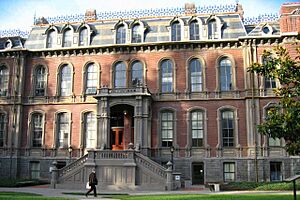
The University of California's second president, Daniel Coit Gilman, opened the new campus in Berkeley in September 1873.
Joining with Other Schools
The University of California was allowed to team up with other independent professional colleges. This meant UC would give degrees to their students, but these colleges would mostly run themselves. This is how UC got medical and law schools in San Francisco early on.
For example, the College of the Law in San Francisco joined UC in 1878. It still runs mostly on its own, with its own leaders. Other medical and health schools in San Francisco also joined UC and eventually became the UC San Francisco campus.
Becoming a Research University
At first, UC mainly focused on teaching students. But in the 1930s, it started to focus more on research. This means that UC's teachers and staff began to do scientific studies and make discoveries that help society directly. Today, UC is known as a top research university.
Growing Across California
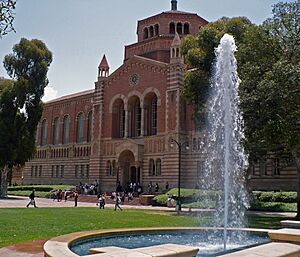
In 1919, a teacher training school in Los Angeles became part of UC, later known as UCLA. Los Angeles grew very fast, and people there wanted their campus to be as important as Berkeley. In 1951, UCLA became equal in status to the Berkeley campus.
From 1957 to 1960, UC changed into a true university system. More campuses were added and given their own leaders, called chancellors. This made each campus more independent.
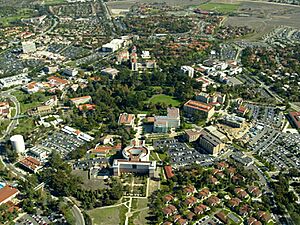
Over time, other locations like Davis (known for agriculture) and Riverside (known for citrus research) also became full UC campuses. In the 1960s, UC Irvine and UC Santa Cruz were opened. The newest campus, UC Merced, opened in 2005.
In 1986, the UC president's office moved away from the Berkeley campus to Oakland. This showed that UC was now a system of many campuses, not just one main campus.
Recent Changes
Since 1960, UC has aimed to accept students from the top 12.5% of California high school graduates. However, due to funding changes, UC started charging more fees, which are now called "Tuition."
In 2022, many academic workers at UC went on strike. They were asking for better pay and benefits. The strike lasted almost six weeks before an agreement was reached.
How the University of California is Run
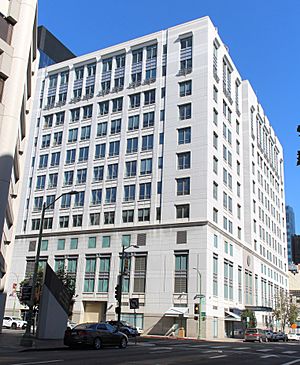
Most University of California campuses are managed by a group called the Regents of the University of California. This group has 18 members chosen by the Governor of California for 12-year terms. There's also one student member who serves for a year. Other members include the Governor, Lieutenant Governor, and the UC President. Teachers at UC also have a say in academic rules through the Academic Senate.
Leaders of the University of California

The President of the University of California is the main leader of the entire UC system. Each campus also has its own leader, called a Chancellor. All the Chancellors report to the UC President. The main office for the UC system is in Oakland.
Even though each campus has its own Chancellor, all the campuses are part of one big university. This helps them work together on important things like talking to the state government and keeping high standards for students and teachers.
Past Presidents
Here are some of the people who have led the University of California as president:
| No. | Image | Name | Term start | Term end | Notes |
|---|---|---|---|---|---|
| acting |  |
John LeConte | June 15, 1869 | August 16, 1870 | |
| 1 |  |
Henry Durant | August 17, 1870 | November 6, 1872 | |
| 2 |  |
Daniel Coit Gilman | November 7, 1872 | March 23, 1875 | |
| 3 |  |
John LeConte | March 24, 1875 | August 22, 1881 | |
| 4 |  |
W.T. Reid | August 23, 1881 | July 31, 1885 | |
| 5 |  |
Edward S. Holden | 1885 | March 22, 1888 | |
| 6 |  |
Horace Davis | March 23, 1888 | September 15, 1890 | |
| acting | Martin Kellogg | September 16, 1890 | January 24, 1893 | ||
| 7 | January 24, 1893 | July 1899 | |||
| 8 |  |
Benjamin Ide Wheeler | October 1, 1899 | July 15, 1919 | |
| University led by a committee of deans, July–December 1919 | |||||
| 9 |  |
David Prescott Barrows | December 20, 1919 | June 30, 1923 | |
| 10 |  |
William Wallace Campbell | July 1, 1923 | June 30, 1930 | |
| 11 |  |
Robert Gordon Sproul | July 1, 1930 | June 30, 1958 | |
| 12 |  |
Clark Kerr | July 1, 1958 | January 20, 1967 | |
| acting | Harry R. Wellman | January 20, 1967 | December 31, 1967 | ||
| 13 | Charles J. Hitch | January 1, 1968 | June 30, 1975 | ||
| 14 | David S. Saxon | July 1, 1975 | June 30, 1983 | ||
| 15 | David P. Gardner | August 1, 1983 | September 30, 1992 | ||
| 16 |  |
Jack W. Peltason | October 1, 1992 | September 30, 1995 | |
| 17 |  |
Richard C. Atkinson | October 1, 1995 | October 1, 2003 | |
| 18 | Robert C. Dynes | October 2, 2003 | June 15, 2008 | ||
| 19 |  |
Mark Yudof | June 16, 2008 | August 31, 2013 | |
| 20 |  |
Janet Napolitano | September 30, 2013 | July 31, 2020 | The first woman to be UC President. |
| 21 |  |
Michael V. Drake | August 1, 2020 | July 31, 2025 | The first Black president of the UC system. |
| 22 |  |
James Milliken | August 1, 2025 | present | |
Official Homes for Leaders
The UC President and Chancellors often live in special homes provided by the university. These homes are sometimes used for events with guests and donors. For example, the UC President's official home is now the Selden Williams House in Berkeley. Many Chancellors also have a "University House" on or near their campus.
How UC is Funded
The University of California gets its money from several places. The state of California provides some funding, but a large part comes from medical centers, student tuition, and private donations. Over the years, the amount of money from the state has changed, leading to increases in student fees.
In 2019, the University of California decided to stop investing its money in companies that deal with fossil fuels. This was done to avoid financial risks related to climate change.
UC Campuses and Their Rankings
The UC system has ten main campuses. These campuses are directly managed by the Regents and the President. The College of the Law, San Francisco is also part of the UC family, but it has its own separate board.
University Rankings
Many UC campuses are ranked very highly by different groups. For example, six UC campuses are in the top 50 U.S. National Universities according to U.S. News & World Report in 2022. These include UCLA, Berkeley, UC Santa Barbara, UC San Diego, UC Irvine, and UC Davis.
Berkeley, UCLA, and UC San Diego are often ranked among the top universities in the world. UC San Francisco is especially known for its medical and health sciences programs. Many individual departments at UC campuses, like Psychology, Economics, and Engineering, are also ranked among the best in the nation.
| Campus | Founded | Enrollment
(Fall 2024) |
Endowment
(FY2024) |
Athletics | Rankings | ||||||||
|---|---|---|---|---|---|---|---|---|---|---|---|---|---|
| Affiliation | Nickname | USNWR National
(2025) |
USNWR Global
(2025) |
ARWU National
(2024) |
ARWU World
(2024) |
CWUR World
(2025) |
Forbes National
(2024) |
THE World
(2025) |
QS World
(2026) |
||||
 Berkeley |
1868 | 45,882 | $3.11 billion | NCAA Div I ACC |
Golden Bears | 17 | 6 | 4 | 5 | 12 | 5 | 8 | 17 (tie) |
 Davis |
1905 | 40,065 | $770.4 million | NCAA Div I Big West |
Aggies | 33 (tie) |
96 (tie) |
39–50 | 101–150 | 60 | 42 | 62 (tie) |
114 (tie) |
 Irvine |
1965 | 37,297 | $894.2 million | NCAA Div I Big West |
Big West | 33 (tie) |
96 (tie) |
34 | 76 | 89 | 39 | 90 (tie) |
293 |
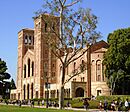 Los Angeles |
1919 | 47,335 | $4.30 billion | NCAA Div I Big Ten |
Bruins | 15 (tie) |
13 | 12 | 15 | 17 | 13 | 18 (tie) |
46 |
 Merced |
2005 | 9,110 | $32.9 million | NCAA Div II CCAA |
Golden Bobcats | 58 (tie) |
763 (tie) |
115-142 | 501-600 | 835 | 324 | 401-500 | N/A |
 Riverside |
1954 | 26,384 | $274.6 million | NCAA Div I Big West |
Highlanders | 76 (tie) |
242 (tie) |
60-78 | 201-300 | 268 | 97 | 251-300 | 458 (tie) |
 San Diego |
1960 | 44,256 | $1.59 billion | NCAA Div I Big West |
Tritons | 29 | 21 (tie) |
14-15 | 18 | 33 | 21 | 34 | 66 |
 San Francisco |
1864 | 3,007 (Graduate only) |
$3.09 billion | N/A | N/A | N/A | 16 (tie) |
16 | 20 | 39 | N/A | N/A | N/A |
 Santa Barbara |
1909 | 26,133 | $428.4 million | NCAA Div I Big West |
Big West | 39 (tie) |
91 (tie) |
31 | 64 | 112 | 35 | 67 (tie) |
179 |
 Santa Cruz |
1965 | 19,938 | $165.4 million | NCAA Div III C2C |
Banana Slugs | 84 (tie) |
133 (tie) |
51-59 | 151–200 | 335 | 187 | 196 (tie) |
440 (tie) |
Academics and Learning at UC
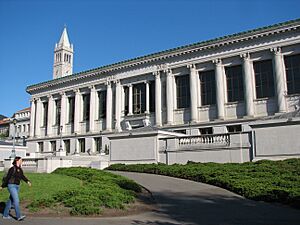
UC is a leader in creating new inventions. Its researchers and teachers come up with thousands of new ideas and patents every year. Eight of UC's ten campuses are part of the Association of American Universities (AAU), a group of top research universities.
UC faculty members have received many important awards, including:
- 5 Fields Medal recipients (for math)
- 25 MacArthur Fellows (for creative work)
- 61 Nobel laureates (for major discoveries)
Nobel Prize Winners at UC
Many people connected to UC, including former students and staff, have won Nobel Prizes. In 2024, five Nobel laureates had ties to UC.
Here's a look at how many Nobel winners are connected to each UC campus:
| Campus | No. of winners | Founded | No. of Winners/
10 years of age |
|---|---|---|---|
| Berkeley | 110 | 1868 | 7.2 |
| San Diego | 28 | 1960 | 4.6 |
| Los Angeles | 27 | 1919 | 2.6 |
| Santa Barbara | 14 | 1909 | 1.8 |
| San Francisco | 10 | 1864 | 0.7 |
| Irvine | 7 | 1965 | 1.3 |
| Davis | 4 | 1905 | 0.3 |
| Riverside | 3 | 1954 | 0.4 |
| Santa Cruz | 1 | 1965 | 0.2 |
| Merced | 0 | 2005 | 0 |
UC Libraries
The University of California has one of the largest collections of books and printed materials in the world, with over 40 million items. All ten campuses share a single online library catalog called UC Library Search. There are also two large regional library facilities that store older books from all UC campus libraries.
School Year Structure
In 1966, most UC campuses changed their school year from semesters to quarters. A quarter system divides the year into three main learning periods. Berkeley and Merced, however, use the semester system, which divides the year into two longer periods.
How Departments are Organized
Most UC campuses, like Berkeley, Davis, Los Angeles, and Santa Barbara, have a large "College of Letters and Science." This college includes many different subjects like arts, humanities, and sciences. It's usually the biggest academic group on these campuses.
Some campuses, like San Diego and Santa Cruz, have a different system. They have "residential colleges" where students live and learn, and academic departments are grouped into broader divisions.
Applying to UC Schools
Each UC campus handles its own admissions. However, students can use one application to apply to many UC campuses at once. For graduate school, you apply directly to the specific department or program.
In 2021, UC decided it would no longer use SAT or ACT test scores when making admissions decisions.
The Early Academic Outreach Program (EAOP) helps middle and high school students from diverse backgrounds prepare for college. This program helps students with their studies, understanding admission rules, and finding financial aid.
UC also accepts many students who transfer from California Community Colleges. About one out of every three UC students started at a community college.
Applying as a High School Senior
Before 1986, students could only apply to one UC campus. If they were rejected but still met UC's basic requirements, they might be sent to another campus with open spots. This often made students unhappy.
So, in 1986, UC changed its system. Now, students can apply to as many UC campuses as they want on one application. This means students can choose which campus to attend after they get their acceptance letters.
The University of California guarantees a spot to students who are in the top one-eighth (12.5%) of California high school graduates. This doesn't mean they get into their first-choice campus, but they are guaranteed a spot somewhere in the UC system.
UC looks at many things when deciding who to admit. They consider grades, courses taken, and also things like extracurricular activities, essays, and personal challenges. They try to understand each student's background.
In 2021, the group of new students at UC was the largest and most diverse ever. Many different ethnic groups were represented, showing the variety of students in California.
Student Diversity
| Campuses
(2023) |
California
(2023) |
United States
(2023) |
|
|---|---|---|---|
| African American | 4.7% | 6.5% | 13.7% |
| American Indian | 0.6% | 1.7% | 1.3% |
| Asian | 33.0% | 16.5% | 6.4% |
| Hispanic/Latino(a) (of any race; including Chicanos and White Hispanics) | 23.3% | 40.4% | 19.5% |
| Non-Hispanic White | 21.6% | 34.3% | 58.4% |
| Pacific Islander | 0.3% | 0.5% | 0.3% |
| International student | 13.9% | N/A | N/A |
| Unknown | 2.7% | N/A | N/A |
Research and Special Programs
The University of California is a leader in research. It has a policy that says research done by UC teachers should be available for everyone to read for free.
National Laboratories
UC helps manage three important national laboratories for the U.S. Department of Energy:
- Lawrence Berkeley National Laboratory (LBNL) in Berkeley, California. This lab does research in many science areas, from understanding the universe to new energy solutions.
- Los Alamos National Laboratory (LANL) in Los Alamos, New Mexico. This lab focuses on making sure U.S. nuclear weapons are safe and reliable.
- Lawrence Livermore National Laboratory (LLNL) in Livermore, California. This lab also works on nuclear weapons safety and has powerful supercomputers.
These labs have a long history with UC, especially the ones named after Ernest O. Lawrence.
Observatories
UC also manages two observatories, which are places with powerful telescopes to study space:
- Lick Observatory on Mount Hamilton, near San Jose.
- Keck Observatory on Mauna Kea in Hawaii, which has very large telescopes.
Natural Reserve System
The NRS was created in 1965. It has 39 special land areas where UC teachers can do long-term research on ecosystems without being disturbed.
- Selected reserves of the University of California Natural Reserve System
Agriculture and Natural Resources
The UC Division of Agriculture and Natural Resources (UCANR) helps California's farming industry. It does research and has offices in every county to help local farmers. It also supports programs like 4-H for young people.
Medical Centers and Schools
The University of California runs five medical centers across the state. These hospitals are important for teaching new doctors and providing healthcare.
- UC Davis Medical Center in Sacramento.
- UC Irvine Medical Center in Orange.
- UCLA Medical Center in Los Angeles and Santa Monica.
- UC San Diego Medical Center in San Diego and La Jolla.
- UCSF Medical Center in San Francisco.
- Medical centers of the University of California
Each medical center is a main teaching place for its campus's medical school. UC San Francisco's medical school is often ranked among the top in the country. UC also has a sixth medical school at UC Riverside. These medical centers help millions of patients each year.
Other UC Facilities
UC has other places to support its students and researchers:
- Casa de California in Mexico City helps UC students studying abroad.
- UC Washington Center (UCDC) in Washington, D.C., provides housing for UC students who are interning with the U.S. government.
- UC Davis runs UC Center Sacramento, which helps students interning with the California government.
- UC Berkeley has a research station in French Polynesia for studying the South Pacific.
Hospitality and Travel
UC also has some places for visitors and alumni:
- The Cal Alumni Association runs travel trips and a family camp called the Lair of the Golden Bear.
- The Berkeley Lab has a guest house for people visiting the lab or UC Berkeley.
- UCLA has hotels on campus and a lodge at Lake Arrowhead for guests and alumni programs.
University Airport
UC Davis operates the University Airport. It's used for university travel and is also open to the public for general aviation.
Seaport
UC San Diego's Scripps Institution of Oceanography has a seaport called the Nimitz Marine Facility. This port is used for its oceanographic research ships.
Continuing Education
For over 100 years, UC has offered programs for adults and professionals who want to keep learning. These programs, called UC Extension, help many people get new skills or advance in their careers.
Images for kids
-
The Citrus Experiment Station, built in 1917, is the oldest building on the UC Riverside campus.
-
Hart Hall at UC Davis, built in 1928, is listed in the National Register of Historic Places.
-
Geisel Library, at UC San Diego, was built in 1970.
-
UC Merced, founded in 2005.
-
Blake House and Gardens, built by architect Walter Danforth Bliss in 1924, served as the official residence of the UC President, from 1967 until 2008, when it was opened to the public.
-
Selden Williams House, built in 1928 and designed by architect Julia Morgan, serves as the official residence of the UC President, since 2022.
-
Kolligian Library at UC Merced.
-
Lawrence Berkeley National Laboratory staff on the magnet yoke for the 60-inch cyclotron, 1938; Nobel prize winners Ernest Lawrence, Edwin McMillan, and Luis Alvarez are shown, in addition to J. Robert Oppenheimer and Robert R. Wilson.
-
Keck Observatory, atop Mauna Kea volcano on the Big Island of Hawaii.
-
Scripps Institution of Oceanography pier, in La Jolla.
-
Casa de California in Mexico City.
See also
 In Spanish: Universidad de California para niños
In Spanish: Universidad de California para niños



